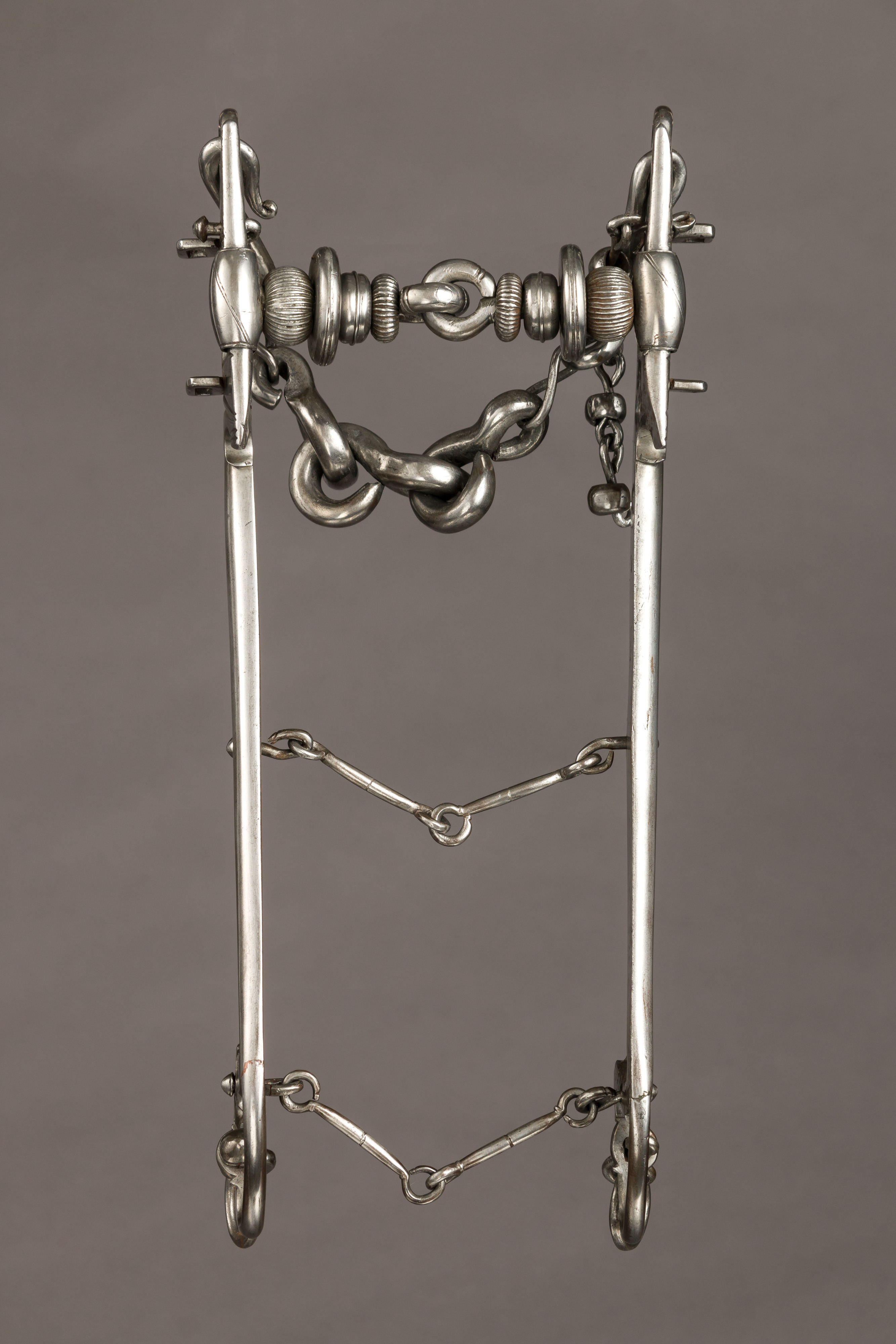Curb Bit
German, Saxony, possibly Dresden
Not on view
According to contemporary equestrian manuals this bit would have been used on a young horse still under training. This is indicated by the use of a mouthpiece without high port (allowing the horse to cushion the bit with its tongue, protecting the bars, the part of the jaw without teeth, to be constantly in contact with the rollers), combined with two long ‘weak’ shanks. The term ‘weak’ means that the swivel ring’s hole for the reins is placed behind the axis of the banquet (piece to which the mouthpiece is attached). Weak shanks, having a lower leverage effect, were used on horses lowering their head and nose too much. The banquets can also be opened to switch out the mouthpiece, a feature particularly appreciated on dressage bits in Germany.
If the long shanks look impressive, their length in fact reduces their reaction time and would actually have been blocked at some point by the horse’s chest, explaining their use on young horses. Curb bits were also at this time used with a very light hand, the well-trained horses responding by anticipation to the slightest move of the reins.
The bit is stamped on the left shank with its maker’s mark, depicting a simplified version of the Saxon coat of arms. Such a symbol used as a mark, as well as the high quality of the piece, indicate that this bit could be the work of the official spur-maker of the Saxon court in Dresden. Whoever he was, his works would have been relatively well-known at the time since some Saxon bits stamped with his mark are represented in the famous book written by the spur-maker Hans Kreutzberger (Warhafftige und Eygentliche Contrafactur und Formen der Zeumung und Gebisz, 1562, Augsburg).
This image cannot be enlarged, viewed at full screen, or downloaded.
This artwork is meant to be viewed from right to left. Scroll left to view more.



